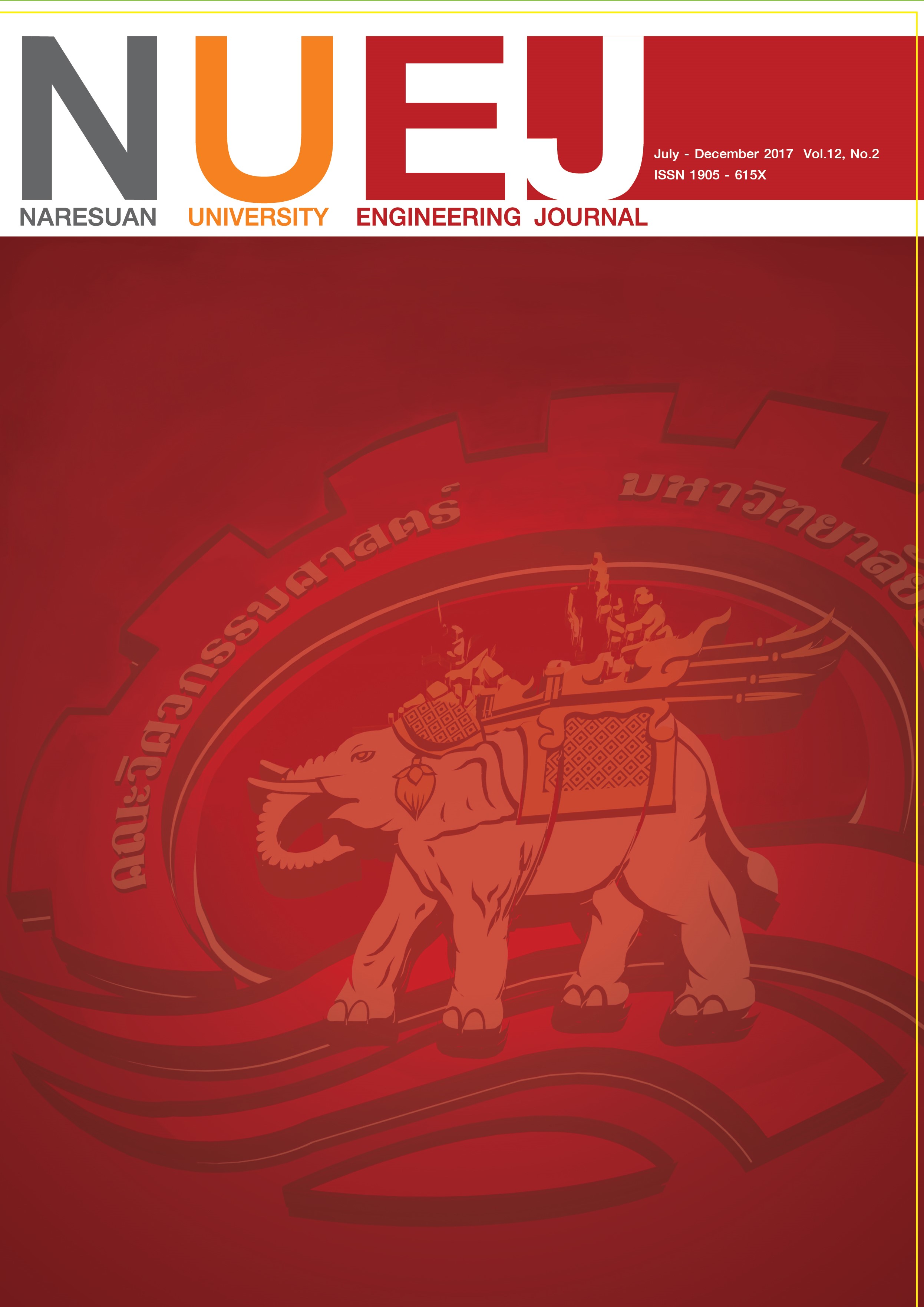ผลของอุณหภูมิการเผาต่อสมบัติการดูดซับของใบหญ้าแฝก Effect of Calcination Temperature on Adsorption Property of Vetiver Grass Leaves
Main Article Content
Abstract
Vetiver grass is a tropical plant which has a deep thick root system, spreading vertically. The root densely binds together likely an underground wall enabling it to store water and moisture. Application of the vetiver grass is considered as an effective measure for soil and water conservation. However, the use of vetiver leaves is limited and it becomes an agricultural waste. In this study, the vetiver leaves were used as a raw material to synthesize an adsorbent for wastewater treatment by using a simple method. The leaves were calcined at various temperatures of 200, 400, 600, 800 and 1,000°C to increase a porosity of the adsorbent. The adsorption efficiency was investigated by using methylene blue solution. The results reveal that the highest adsorption efficiency of 91% was found in the adsorbent calcined at 200°C with adsorption capacity at 27.4 mg/g. In addition, the adsorption mechanism was described by Langmuir isotherm and pseudo-second order of kinetic model.
Article Details
References
Ye, M., Sun, M., Liu, Z., Ni, N., Chen, Y., Gu, C., Kengara, F.G., Li, H. & Jiang, X. (2014). Evaluation of enhanced soil washing process and phytoremediation with maize oil, carboxymethyl--cyclodextrin and vetiver grass for the recovery of organochlorine pesticides and heavy metals from a pesticide factory site. Journal of Environmental Management, 141, 161-168.
Zhang, X., Gao, B. & Xia, H. (2014). Effect of cadmium on growth, photosynthesis, mineral nutrition and metal accumulation of bana grass and vetiver grass. Ecotoxicology and Environment Safety, 106, 102-108.
Ho, Y., Hsieh, J. & Huang, C. (2013). Construction of a plant–microbe phytoremediation system: Combination of vetiver grass with a functional endophytic bacterium, Achromobacter xylosoxidans F3B, for aromatic pollutants removal. Bioresource Technology, 145, 43-47.
Santasnachok, C., Kurniawan, W. & Hinode, H. (2015). The use of synthesized zeolites from power plant rice husk ash obtained from Thailand as adsorbent for cadmium contamination removal from zinc mining. Journal of Environmental Chemical Engineering, 3, 2115-2126.
Kadirvelu, K., Kavipriya, M., Karthika, C., Radhika, M., Vennilamani, N. & Pattabhi, S. (2003). Utilization of various agricultural wastes for activated carbon preparation and application for the removal of dyes and metal ions from aqueous solutions. Bioresource Technology, 87, 129-132.
Le, S.T.T., Yuangpho, N., Threrujirapapong, T., Khanitchaidecha, W. & Nakaruk, A. (2015). Synthesis of mesoporous materials from vetiver grass for wastewater treatment. Journal of The Australian Ceramic Society, 51, 40-44.
Othman, Z.A.A., Habila, M.A., Ali, R., Ghafar, A.A. & Hassouna, M.S.E. (2014). Valorization of two waste streams into activated carbon and studying its adsorption kinetics, equilibrium isotherm and thermodynamics for methylene blue removal. Arabian Journal of Chemistry, 7, 1148-1158.
Katesa, J., Junpiromand, S. & Tangsathitkulchai, C. (2013). Effect of carbonization temperature on properties of char and activated carbon from coconut shell. Suranaree Journal Science and Technology, 20, 269-278.
Daud, W.M.A.W., Ali, W.S.W. & Suliman. M.Z. (2000). The effects of carbonization temperature on pore development in palm-shell-based activated carbon. Carbon, 38, 1925-1932.
Li, W., Yang, K., Peng, J., Zhang, L., Guo, S. & Xia, H. (2008). Effects of carbonization temperatures on characteristics of porosity in coconut shell chars and activated carbons derived from carbonized coconut shell chars. Industrial Crops and Products, 28, 190-198.


